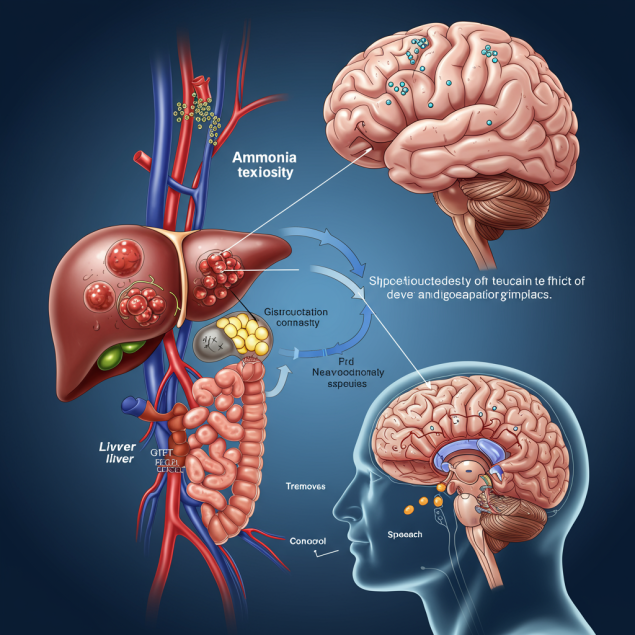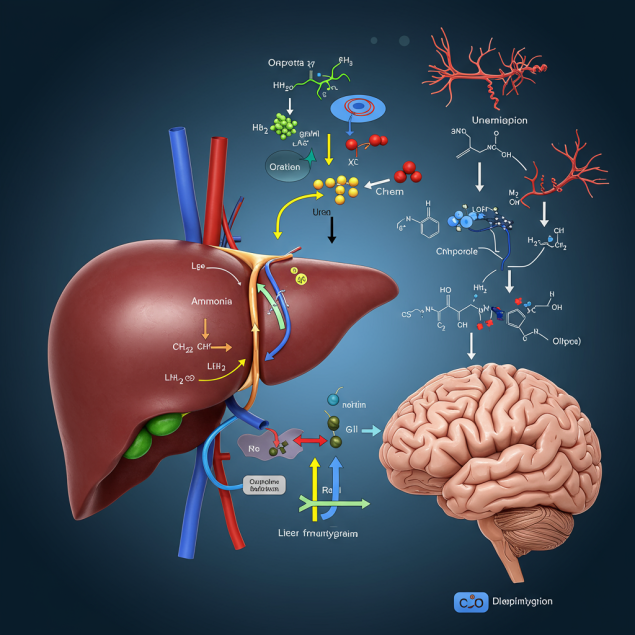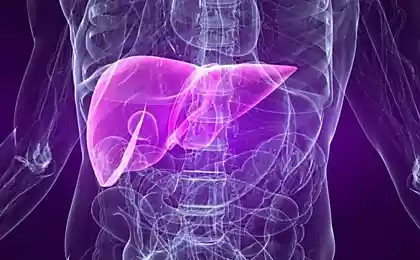152
Symptoms of excess ammonia in the body, causes and ways to reduce it
Health ecology. Excess ammonia in the body can be accompanied by symptoms such as headaches, decreased concentration, sleep disorders and digestion. But why does this happen, how to recognize the problem in time and what can be done to restore balance in the body? We talk about the causes and consequences of increased ammonia levels, as well as ways to reduce it.

Effects of elevated ammonia levels on the human body
What is ammonia and why it can accumulate in the body
Ammonia (NH3) is a colorless gas with a characteristic pungent odor that is constantly formed in our body as a byproduct of protein metabolism. Normally, the liver quickly converts ammonia into urea, which is then excreted by the kidneys in the urine. This process is critical because ammonia is toxic to cells, especially neurons in the brain.
In a healthy body, the concentration of ammonia in the blood is maintained at a low level (usually 11-32 μmol / l). However, under certain conditions, this balance can be disrupted, leading to a condition known as hyperammonemia, an elevated level of ammonia in the blood.
The main causes of excess ammonia in the body:
- Violations of liver function - due to hepatitis, cirrhosis, fatty dystrophy or other liver diseases
- Genetic disorders Birth defects of the urea cycle (for example, deficiency of ornithine transcarbamylase)
- Drug intoxication Certain drugs, especially anticonvulsants (valproic acid), may increase ammonia levels
- Excessive protein intake Especially with intense exercise and unbalanced high-protein diets with insufficient carbohydrate intake
- Urinary tract infections Certain bacteria break down urea to ammonia
- Gastrointestinal bleeding Blood proteins break down in the intestines to form ammonia
- Violations of the intestine Intestinal dysbiosis can alter metabolic processes and increase ammonia production
Symptoms and signs of elevated ammonia levels
Symptoms of hyperammonemia range from mild and nonspecific to severe neurological manifestations, depending on the degree of increase in ammonia levels and the rate of its increase. Ammonia is especially toxic to the nervous system, so many symptoms are associated with disorders in the brain.
Early symptoms of excess ammonia:
- Increased fatigue, weakness
- Problems with concentration
- Irritability, mood swings
- Headaches, especially after eating protein
- Sleep disorders (insomnia or drowsiness)
- Nausea, decreased appetite
- Bad breath (ammonia)
- Disorders of digestion (meteorism, diarrhea)
Symptoms of moderate hyperammonemia:
- Slow speech and movement
- Violations of coordination
- Tremor of hands
- Confusion
- Changes in handwriting
- Vision impairment (double vision)
- Increased sensitivity to light and sounds

Metabolism of ammonia in the body and its effect on the brain
Symptoms of severe hyperammonemia:
With a significant increase in ammonia levels, serious neurological disorders that require emergency medical care can develop:
- Expressed confusion of consciousness up to disorientation
- Seizures
- Star tremor (asterixis) - characteristic tremor with outstretched arms
- Hepatic encephalopathy
- Brain edema
- coma
Diagnosis of elevated ammonia levels
A blood test is performed to determine the level of ammonia in the body. However, sampling and processing require special conditions, as ammonia levels can increase if the sample is not stored properly. In addition, indicators can vary significantly depending on the time of day, food intake and physical activity.
Comprehensive diagnosis usually includes:
- Blood test for ammonia
- Biochemical blood test assessing liver function
- Tests for inflammatory markers
- Ultrasound, CT or MRI of the liver (in case of suspected liver disease)
- Genetic testing (if congenital disorders are suspected)
- Analysis for intestinal dysbiosis
Ways to reduce the level of ammonia in the body
Medical treatments
With diagnosed hyperammonemia, consultation with a doctor is required, who may prescribe:
- Medications lactulose, rifaximin, L-ornithine-L-aspartate, which reduce production and increase the excretion of ammonia
- Correction of the root cause treatment of liver diseases, adjustment of drug therapy
- hemodialysis In severe cases, to quickly remove ammonia from the blood
Nutrition Tips for Elevated Ammonia Levels
- Limit your protein intake to normal (0.8-1.0 g per kg of weight) and distribute it evenly throughout the day.
- Give preference to plant protein sources and easily digestible proteins (fish, poultry)
- Increase your intake of fiber-rich foods (vegetables, fruits, whole grains)
- Include in the diet products with probiotics (kefir, yogurt without additives, sauerkraut)
- Eat more foods rich in zinc and selenium that support liver function (seafood, pumpkin seeds, nuts)
- Drink enough water (30 ml per kg of weight) to maintain optimal kidney function
- Eliminate alcohol, which significantly burdens the liver and can aggravate hyperammonemia
Natural remedies to support ammonia detoxification
Some natural substances have shown the ability to help in the elimination of ammonia and support liver function:
- L-ornithine An amino acid that is involved in the urea cycle and helps convert ammonia into urea
- Arginine Another amino acid important for the urea cycle
- molybdenum A mineral involved in ammonia metabolism
- milk thistle contains silymarin, which supports liver function
- curcumin Has hepatoprotective properties
- Citric acid Helps to normalize the pH of the body

Foods and herbs that support liver detoxification
Lifestyle changes to reduce ammonia levels
- Regular moderate physical activity Improves blood circulation and metabolic processes, but avoid excessive loads that can increase protein catabolism
- Normalizing sleep patterns During sleep, detoxification processes are activated.
- Stress management Chronic stress increases catabolic processes and may contribute to increased ammonia levels
- Sauna and other practices that cause sweating Help in the elimination of toxins, but require sufficient fluid replenishment
- Deep breathing Improves tissue oxygenation and supports liver function
Prevention of increased ammonia levels
To prevent ammonia problems, it is recommended to:
- Regularly undergo preventive medical examinations
- Maintain liver health by avoiding excessive alcohol and hepatotoxic substances
- Eat a balanced diet without getting carried away by extreme high-protein diets
- Maintain a healthy gut microbiome
- Adequately hydrated for effective elimination of metabolic products
- Carefully take medications, especially affecting the liver
Conclusion
Elevated levels of ammonia in the body are a serious condition that can lead to a variety of symptoms, from mild discomfort to severe neurological disorders. Timely recognition of the problem and taking measures to reduce ammonia levels is critical to maintaining health.
If you have symptoms that indicate a possible excess of ammonia, especially if you have liver disease or other risk factors, it is important to see a doctor for diagnosis and appropriate treatment. Simultaneously with medical therapy, nutritional adjustment, support for natural detoxification processes and a healthy lifestyle are the most important components of an integrated approach to solving the problem.
Preventing excess ammonia is an investment in the long-term health of your nervous system, liver and body.
Glossary
Hyperammonemia
Elevated blood ammonia levels, usually defined as concentrations above 35-45 μmol/L.
The urea cycle
A metabolic pathway in the liver that converts toxic ammonia into relatively harmless urea for subsequent excretion by the kidneys.
Hepatic encephalopathy
Neurological disorder caused by the accumulation of toxins (including ammonia) in the blood due to impaired liver function.
asterixis
A characteristic tremor or “slapping” tremor with outstretched arms, which is a symptom of hepatic encephalopathy and elevated ammonia levels.
lactulose
A synthetic disaccharide used to treat elevated ammonia levels. It acts by acidifying the contents of the colon, which prevents the absorption of ammonia and contributes to its excretion.
L-ornithine-L-aspartate
A compound that stimulates urea cycle enzymes and promotes the conversion of ammonia into urea.
Bowel dysbiosis
Disturbance of the balance of intestinal microflora, which can lead to increased formation of ammonia from food proteins.
Hepatoprotectors
Substances that protect liver cells from damage and support their function, including ammonia detoxification.
Sources:
- Hyperammonemia: A Review of the Current Literature. National Library of Medicine
- World Health Organization. Guidelines on the management of liver disorders
- Ammonia Metabolism and Hyperammonemic Disorders NCBI
- Hyperammonemia. Wikipedia























